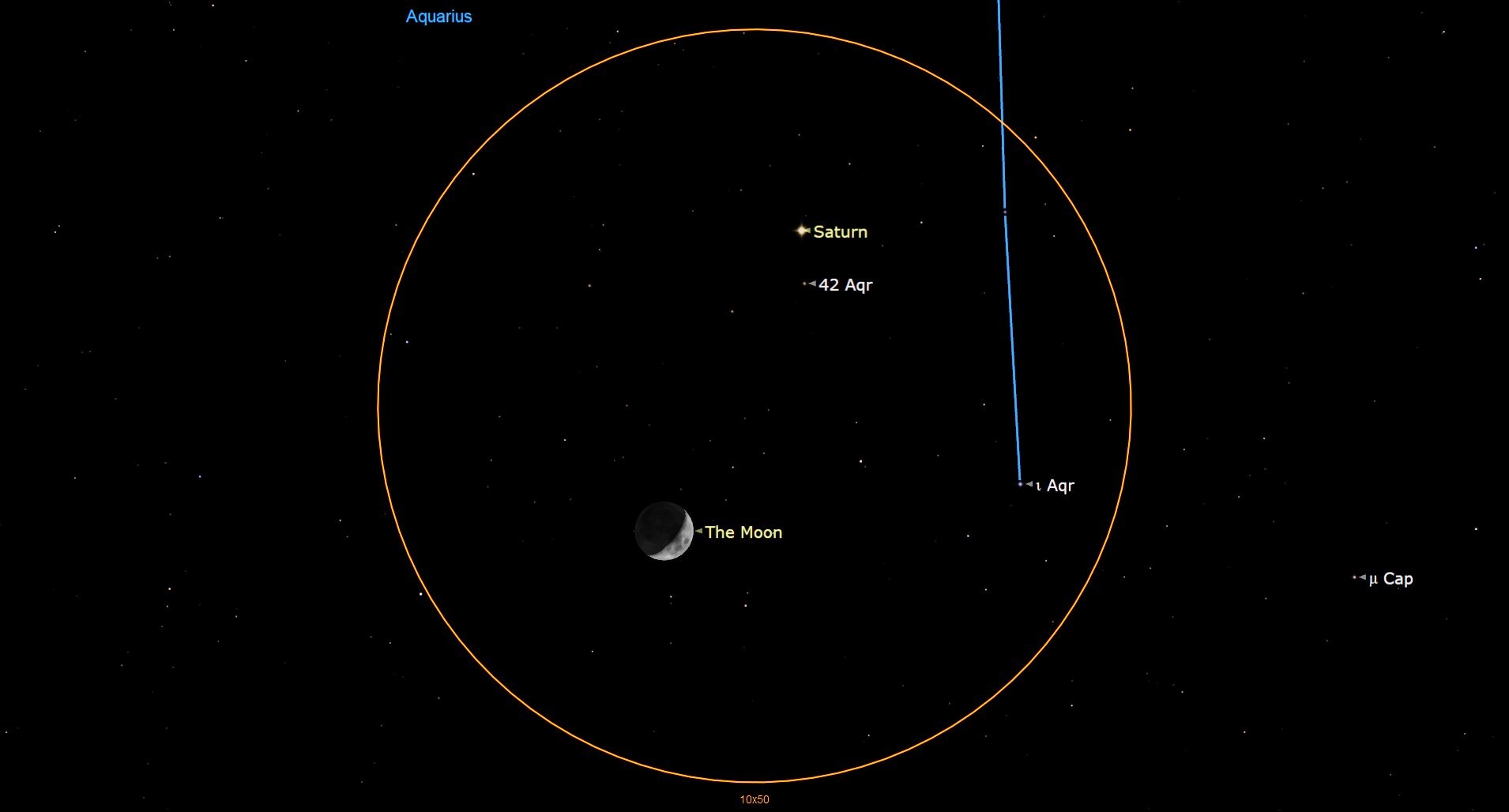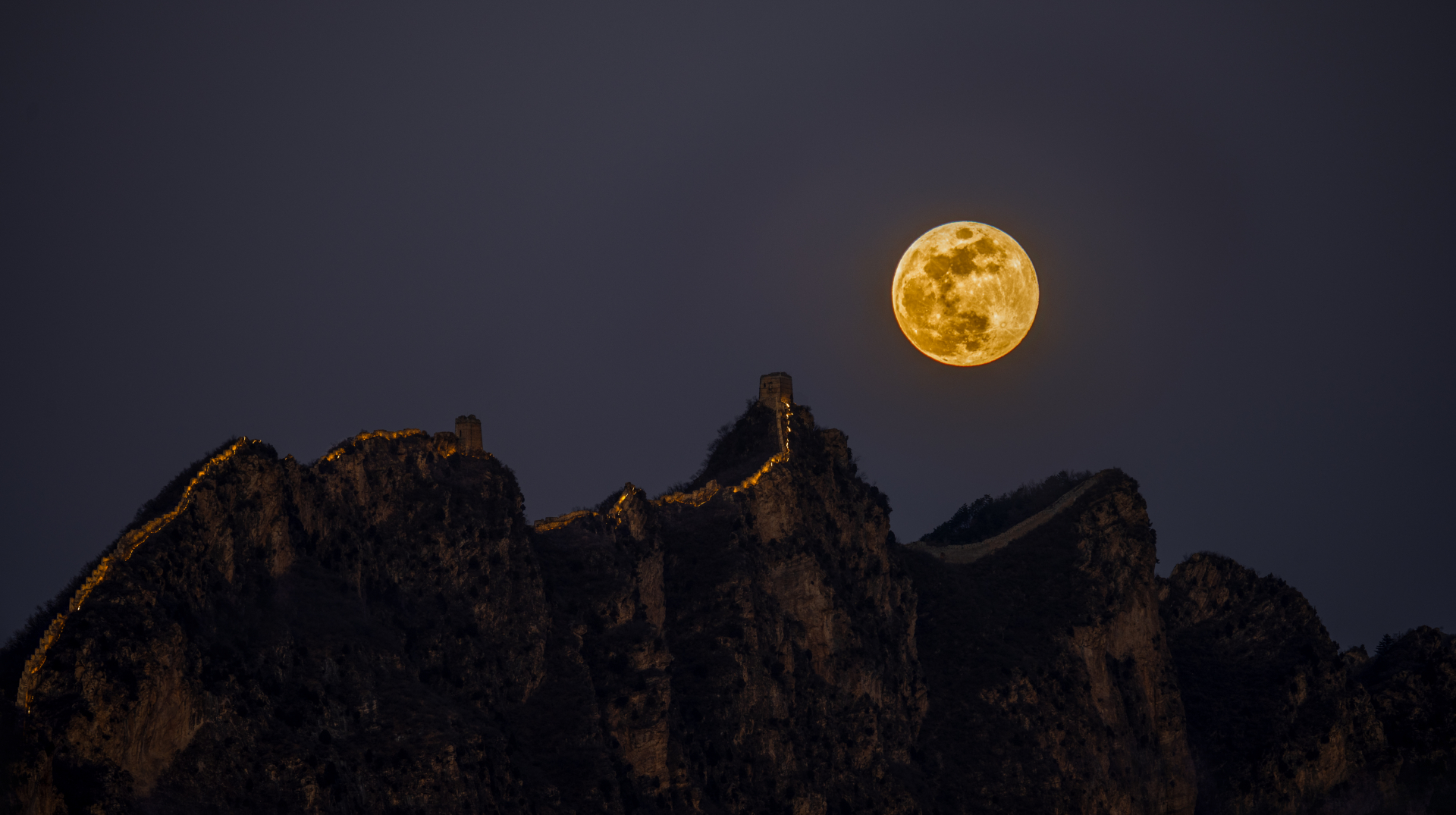See the 5-day-old crescent moon have a holiday meet-up with Saturn tonight

The moon will meet up with Saturn, the solar system's second-largest planet, on Sunday (Dec. 17) when the two celestial bodies make a close approach.
The moon will be almost half-illuminated during the close approach, and at around the same time, the two celestial bodies will share the same right ascension (the celestial equivalent of longitude) in an arrangement astronomers call a conjunction.
From New York City, the rendezvous between the moon and Saturn will be visible from the time the moon rises around midday, according to In the Sky. Saturn will be just to the right of the five-day-old moon, with both celestial objects located in the constellation of Aquarius during the meet-up.
The arrangement between the moon and the gas giant planet will be much more visible after sunset, until just before they set to the southwest at around 9:48 p.m. EST (0248 GMT on Dec. 18). This means there is time to spot the two bodies after the sun vacates the sky when it sets at 4:29 p.m. EST (2129 GMT).
Related: Night sky, December 2023: What you can see tonight

Looking for a telescope for the next night sky event? We recommend the Celestron Astro Fi 102 as the top pick in our best beginner's telescope guide.
During the conjunction, the moon will have a magnitude of -11.5, with the minus prefix indicating a particularly bright object in the sky over Earth. Saturn will be much dimmer with a magnitude of 0.7.
During the close approach, the moon will be over 100 times larger than Saturn in the night sky. Of course, this is simply an effect of our perspective from Earth, as the moon is much closer to our planet, which is the third planet from the sun, than Saturn, which is the sixth planet in the solar system.
Breaking space news, the latest updates on rocket launches, skywatching events and more!
Saturn is currently around 930 million miles (1.5 billion kilometers) from Earth, which is around 10 times the distance between Earth and the sun, and means that light would take around 1 hour and 23 minutes to travel from our planet, past Mars and Jupiter and out to Saturn.
In contrast, the distance to the moon from Earth is currently just around 230,000 miles (370,000 kilometers), and a light signal sent from Earth would take just 1.2 seconds to travel between the two. This means that the Earth/moon system as it currently stands would fit into the current distance between Saturn and Earth around 4,068 times.
If the moon and Saturn were placed at the same distance from Earth, the moon would be much smaller than Saturn, with the gas giant easily ruling the night sky over our planet instead of the moon.
The moon has a diameter of around 2,200 miles (3,500 kilometers), about a quarter of the diameter of Earth, while Saturn has a width of around 72,300 miles (116,500 kilometers), making it about 9.5 times wider than Earth. That means it would take at least 34 bodies the size of our moon to create a belt that stretches around the equator of Saturn.
When considering the difference in volume between the moon and Saturn, the difference in size between the two bodies becomes even more striking. It would take around 760 Earths to fill the volume of Saturn, and it would take around 50 moons to fill the volume of Earth. That means it would take around 3,800 moons to occupy the volume of Saturn.
If you are hoping to catch a look at the moon in conjunction with Saturn, our guides to the best telescopes and best binoculars are both a great place to start. Telescopes can offer you a great close-up view of distant objects, while
If you're looking to snap photos of these celestial objects or the night sky in general, check out our guide on how to photograph the moon, how to photograph the planets, as well as our best cameras for astrophotography and best lenses for astrophotography.
Editor's Note: If you snap an image of the moon with Saturn and would like to share it with Space.com's readers, send your photo(s), comments, and your name and location to spacephotos@space.com.

Robert Lea is a science journalist in the U.K. whose articles have been published in Physics World, New Scientist, Astronomy Magazine, All About Space, Newsweek and ZME Science. He also writes about science communication for Elsevier and the European Journal of Physics. Rob holds a bachelor of science degree in physics and astronomy from the U.K.’s Open University. Follow him on Twitter @sciencef1rst.
